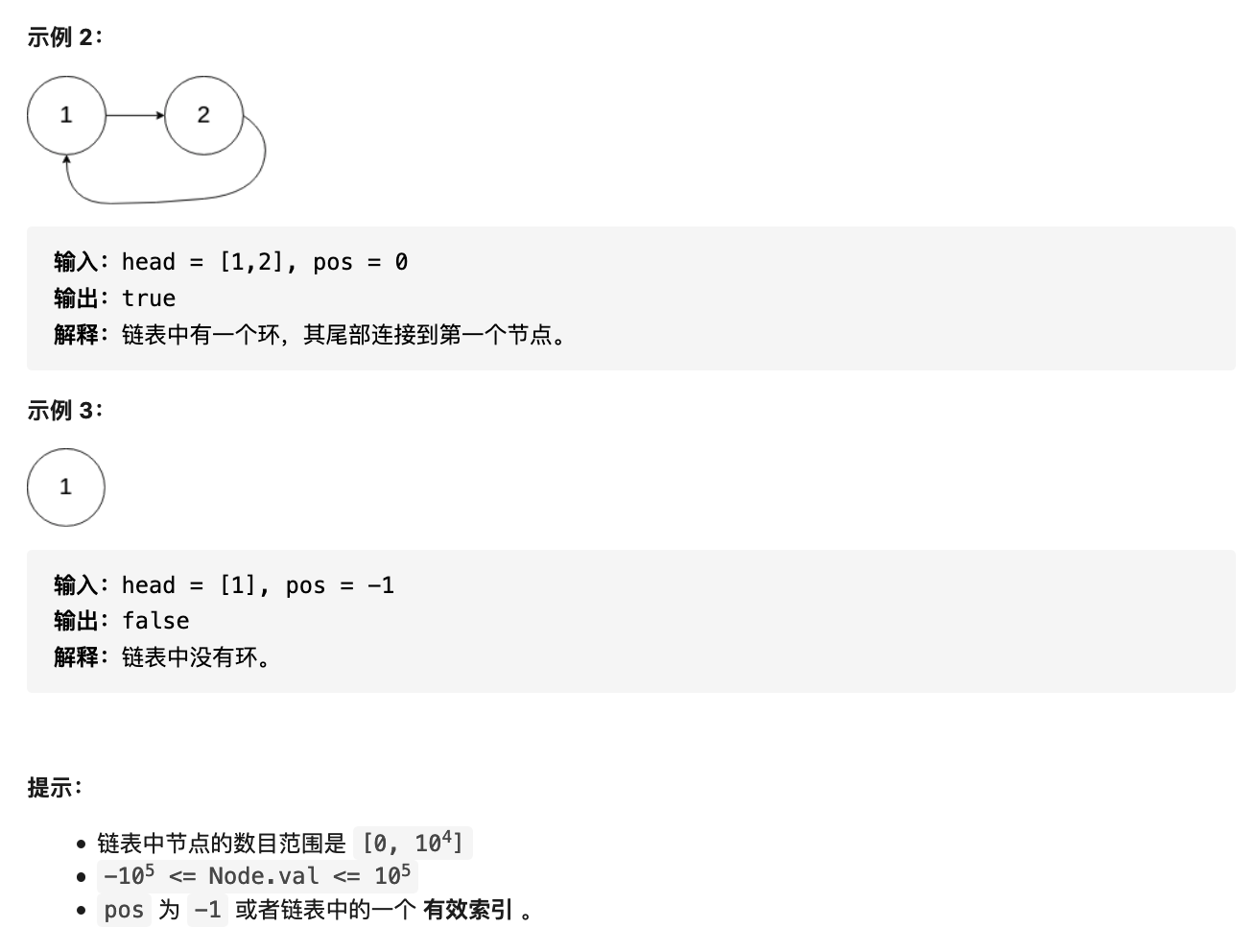

快慢指针版本一
public class Solution { // 使用快慢指针法,快指针每次走两步,慢指针每次走一步,如果链表有环,则快慢指针一定会相遇 public boolean hasCycle(ListNode head) { if (head == null || head.next == null) return false; // 快指针 ListNode fast = head.next; // 慢指针 ListNode slow = head; while (fast != slow) { // 如果为空,说明跑完了,没有环,返回 false if (fast == null || fast.next == null) return false; fast = fast.next.next; slow = slow.next; } return true; }}
快慢指针版本二
public class Solution { public boolean hasCycle(ListNode head) { if (head == null || head.next == null) return false; // 慢指针 ListNode fast = head.next; // 快指针 ListNode slow = head; // 如果快指针与快指针的下个节点都不为空,则继续遍历 // 为什么判断快指针?因为快指针先到达终点,如果链表没有环,到终点时为空 while (fast != null && fast.next != null) { // 如果快指针与慢指针相等,说明相遇了,返回 true if (fast == slow) return true; slow = slow.next; fast = fast.next.next; } return false; }}
使用 set 存放节点
public class Solution { // 使用一个 set 记录遍历过的节点 public boolean hasCycle(ListNode head) { if (head == null) return false; Set<ListNode> set = new HashSet<>(); while (head != null) { // 如果节点在 set 中,说明有环 if (set.contains(head)) return true; set.add(head); head = head.next; } return false; }}



